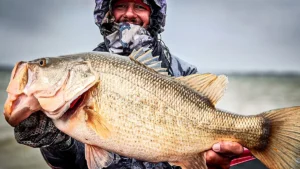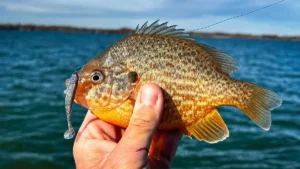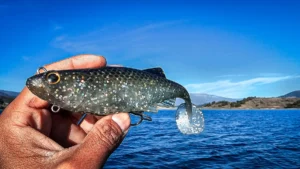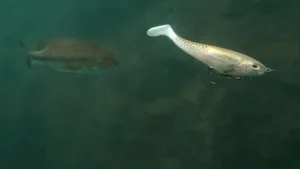Much of the mystique is gone in fishing. Sure, there’s still a lot we don’t know about the watery realm which lies beneath. But with all the advancements in technology we enjoy today, we can dang near peer into the soul of a fish from 50 feet away and quickly determine if, when, and how it can be caught. Once we make our determination, we also have the best tools ever to finish the job.
All of the tech and new gear is great, but I think it’s easier to get burnt out on fishing now than ever before. Some anglers just don’t want to adapt, others feel completely priced out of the competition by not being able to afford the latest and greatest; though guys like John Cox have proven you can still catch them with the proverbial cane pole in comparison to the insane money other anglers are spending.
And all of this is really irrelevant to this article with the exception of one key thing; this burnout feeling I’m talking about can be completely reversed by a handful of little niche deals that are spread out around the industry.
I personally had this burnout feeling about six months ago and finally tried kayak fishing on for size, and I absolutely loved it. It was rejuvenating. But to the point of what we’re here to talk about today, I also had this sense of disinterest when it came to fishing a couple years ago when I found swimbaits.
Now, I’m no swimbait expert by any means, but that’s kind of the point. I was so new to it and it was all so different that I really fell in love with it. Which in turn, was the spark I needed in my fishing in general. There’s something pure about big-bait fishing. It gets back to the very basic core of trying to trick a fish with nothing but a rod, reel, line and lure.
Sure, you might need a graph to find good offshore places for some of the deeper water applications and I’m sure things like Huddlestons are fun to throw in those situations. But I’m primarily talking about up-close, hand-to-hand combat in the thick of it with glide baits. Weaving the bait in, out and around cover. Waiting tensely for that big swiping blowup just as you’re about to cross a limb. That stuff gets my heart pumping again.
So I sat down with professional angler and swimbait savant Brandon Palaniuk to discuss his new swimbait, the Storm Arashi Glide Bait.
What interests me the most about this bait is that a mega-company like Rapala let a concept breathe for three years when so many other companies are rushing products out to market. And that’s not to knock other companies or say they’re pushing junk. Speed is simply the name of the game in the very competitive lure market. You must identify an area of opportunity and then quickly fill it before the opportunity has passed or someone else does.
Take the the Alabama rig for instance and the utter chaos that we saw as everyone brought their version to market as quickly as possible, only to see the whole market flooded and eventually collapse when most tournaments banned it. What many people don’t think about was the high-stakes gambling going on behind the doors of these massive companies producing these baits. Those companies win those bets more often than not, but still, it’s a lot to expect one to let you marinate an idea for three years before tossing it on the grill.
“I really appreciate Rapala trusting me to get it right before just putting something out,” Palaniuk said. “I think they knew I wanted it to be as close to what I thought was perfect as possible. I’ll be honest, I honestly think it’s the best glide bait out there right now that someone can buy in that size range (7 1/2 inches).
“There are different things that a 12-inch glide bait can do. But in that 7 1/2-inch size range, I believe whole heartedly that it’s the best one. I still have ideas and things that I want to implement in the future. But it was to a point where a seasoned swimbait guy or someone who has never thrown a glide bait before could pick it up and go catch fish on it.”
Versatility was very important to Palaniuk. Not only in that anyone could use the bait, but also that the bait could do a lot of things. Certain glide baits do certain things better than others. Some have a great, slow retrieve, wide glide but they blowout when you speed up the bait. Others have a great burning action, but fall short when you slow them down.
“I’ve thrown nearly every glide bait on the market during the process of making this bait,” Palaniuk said. “And I gathered inspiration from all those baits. I’m not afraid to say that. I would have one glide bait that I really loved that would glide beautifully really wide. But if I tried to twitch it really fast, it would want to blow out and wouldn’t do as much as I thought it could. So I tried to take as many bits and pieces as I could and get as versatile as possible.”
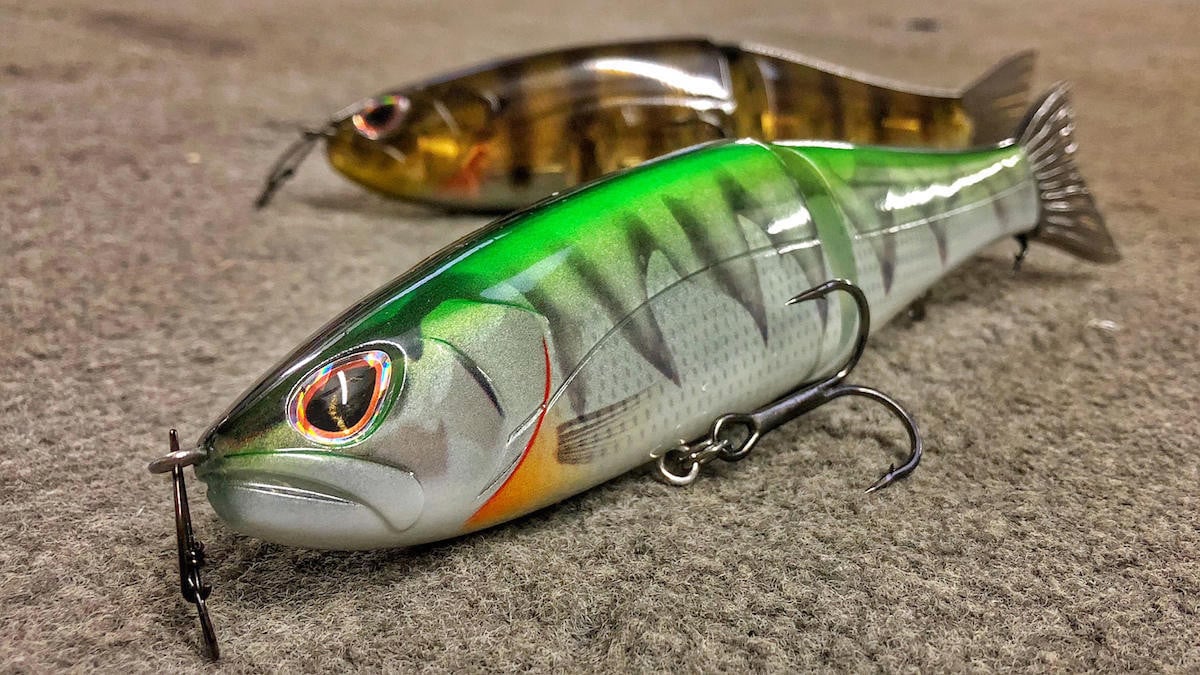
Designing the Arashi Glide Bait
The physics of designing the Storm Arashi Glide Bait to do it all are in constant opposition to each other. According to Palaniuk, what you need for a bait to have a good, wide gliding action on a slow retrieve contradicts the physical requirements needed for a bait to work well on a faster or twitch style retrieve.
“That’s where you really have to start playing with a lot of things,” said Palaniuk. “Where the line tie is positioned, where the weight is positioned in the bait, where the joint is, how hard or how soft the tail is, body shape, the width of the back versus the belly. There are just so many things where a millimeter here or a millimeter there actually changes the stability of the bait and the things it can do.
“That was the hardest part of the process. You get a prototype and you’re like okay, we’re close, but I think we need to tweak this. Then that goes back and they have to do some more tooling and then it’s another month or two before you get another test sample. So it continues to compound every time you make a change.”
The design process involved Palaniuk field testing prototypes here in the states and then relaying the results to the the team at Rapala headquarters in Minnesota and, ultimately, Rapala’s research and development team in Japan.
“Some of the first prototypes were really close,” Palaniuk said. “I caught a 9-pounder on an early prototype in Oklahoma. Before I launched the boat on the St. Lawrence River once, I grabbed one of the prototype ones and walked down to the dock and threw it out. I started working it down the side of the dock and caught a 4-pound largemouth. That was early on too. But the hinge was too wide and it didn’t have quite the right action to it. I still caught fish on it, but it just didn’t have the versatility I wanted it to.”
As Palaniuk offered verbal insight and the team tried to implement it, other things were affected and the prototypes regressed in some ways. Fearing a breakdown in communication, Palaniuk did what Palaniuk has done so many times before-he broke out his GoPro.
“I remember at the Potomac River, I was staying at this cheap hotel,” Palaniuk said. “I talked the owners into letting me go and film in the swimming pool. I took all these prototype glide baits out there and filmed a video so that they could understand how I fish the bait and what I wanted it to do.
“So I’m out there with a GoPro and I’ve got my girlfriend Tiff out there with a GoPro and she’s filming me and I’m trying to take underwater stuff to show them different glide baits and say this one does this well and this one does this well, here’s where ours is good and where it’s lacking, these are the things we need to change and we just went back and forth.
“I would Dropbox them the video and they would watch it and say, ‘Okay, we’re going to change these things’ and then they’d send me a sample. Then we’d do it all again. Until we got the action right.”
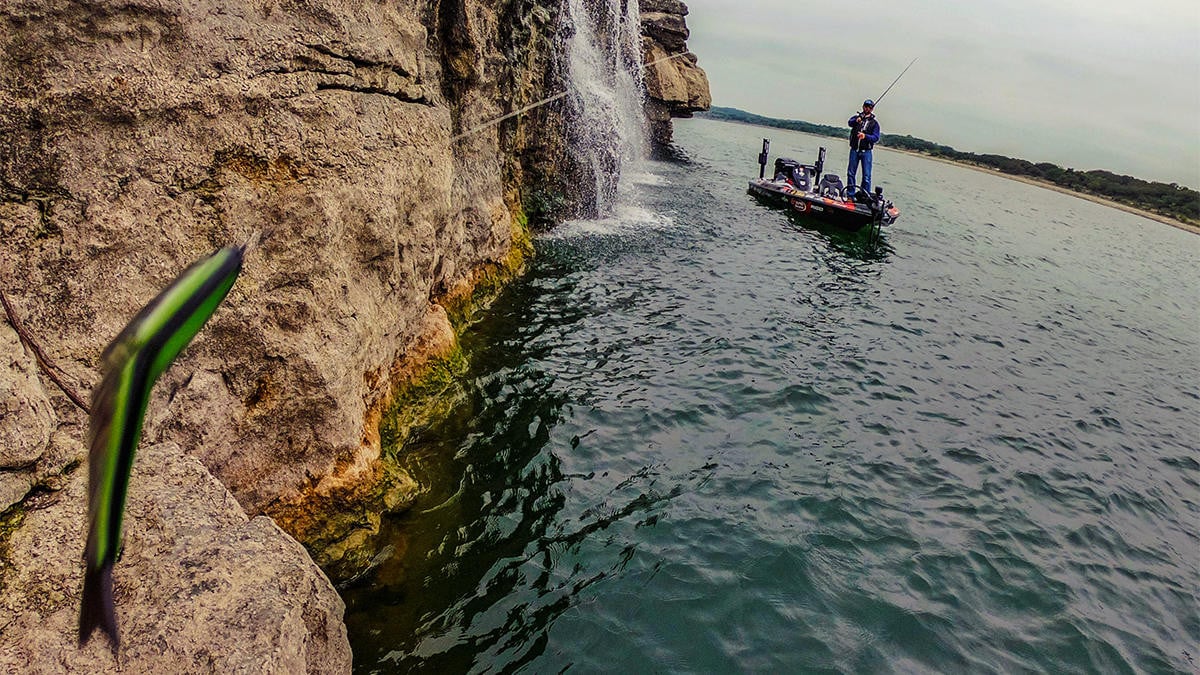
How to fish it
Now that the action is dialed in, let’s talk about how you can actually take advantage of all the versatility of Palaniuk’s masterpiece.
“You can fish it with what’s kind of the standard glide bait retrieve; a slow, steady, 3/4 turn of the reel action,” Palaniuk said. “Make a 3/4 handle turn, let it glide, 3/4 handle turn, let it glide.”
The second retrieve Palaniuk regularly employs is optimal for fishing around cover. By letting the bait make full glides in one direction but abbreviating the glides in the opposite direction, Palaniuk can effectively walk the bait through and around cover like laydowns and dock posts.
“Once you understand the bait and you can feel how the bait moves, you can start to work it around cover,” said Palaniuk. “And that’s one of the things that I think make a glide bait unique and gives it more of a lifelike or natural approach versus something that just comes straight back through the water column. You can actually make this thing dart and dive though the cover.”
The third common retrieve Palaniuk likes is simply burning the bait back to the boat with a fast retrieve. After the cast, Palaniuk starts the bait back with a steady retrieve and then speeds the reel up once the bait gets going.
“Once you get it going, just burn that reel handle and it will tighten up and then it has a really hard kick to it without a wide glide,” Palaniuk said. “But it doesn’t blow out like some other glide baits. Then if you pause it and give the bait slack, it will make a hard turn to one side. To get enough slack to do that, you need to be reeling it and then pull your rod down and throw it back at the bait as you stop reeling to give it that slack. It has to have that slack to really go sideways or else the bait just pulls against the line.”
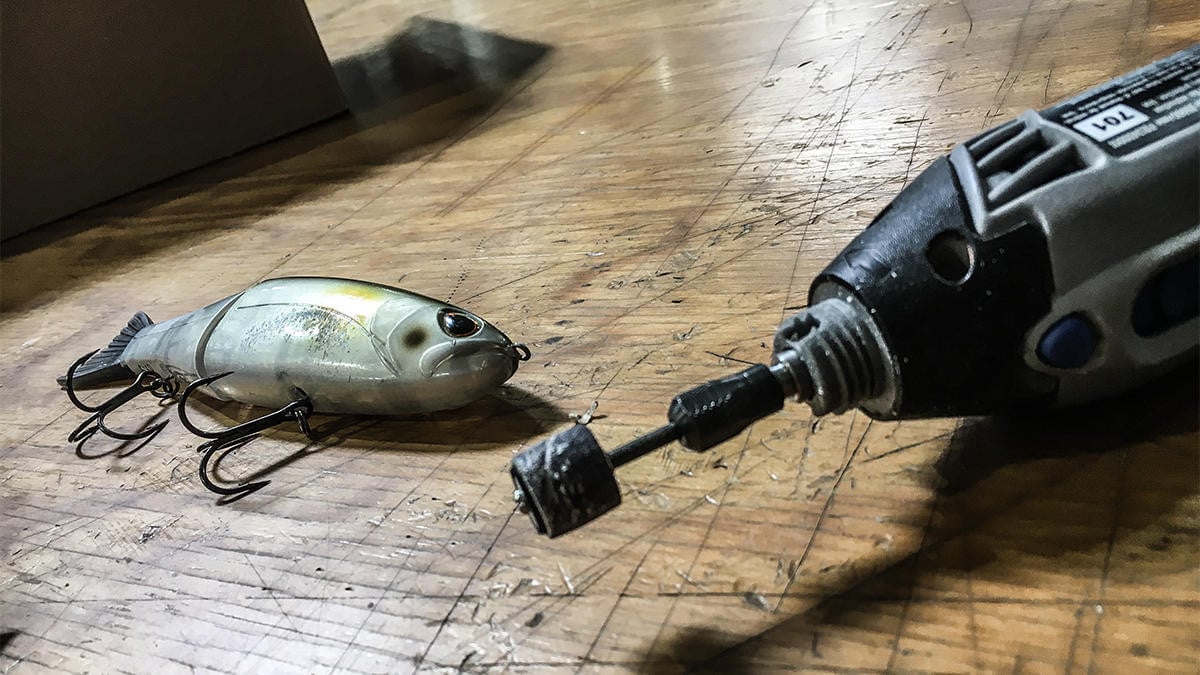
Completion of the process
Palaniuk never went to Japan during the design process of the bait, but he knew the pilgrimage was necessary in search of the exclamation point he wanted to punctuate the process. For in Japan lies Lake Biwa, the Mecca for many swimbait purist.
“There’s just something about Biwa for any angler that’s a hardcore swimbait guy,” said Palaniuk. “It’s just one of those lakes that’s on the map. Biwa is like the motherland. It’s not that it’s that much better than lakes that we have in the United States. It’s very similar to a lot of the good lakes we have here. But it just has that special, nostalgic sense to it. And I felt like, if I could catch fish there on it, then I could prove to myself more than anything that this thing really will catch fish and it’s something that’s a little bit different.”
However the warm and fuzzy feeling quickly gave way to palpable tension after day one on the water. Faced with brutal slick calm and sunny conditions, Palaniuk’s efforts came up empty in regards to catches. Several followers, no commitments.
“Everyone that was there,” said Palaniuk. “The boat captain I was with, the whole Rapala Japan team, Tiff, everybody knew we were there to catch a fish on that bait.”
Then on day two, it happened. Palaniuk hooked into a 4-pounder, something he has done hundreds of times before. But this wasn’t just a 4-pounder. This was a 4-pounder, on a lake he had longed to fish the majority of his life, on a bait he had crafted for three years with passion and attention to detail. A bait that he had given up time for, time being a rare commodity in the life of a professional angler, but a sacrifice he readily made in exchange for what he knew he would eventually feel. And in this moment, that feeling coursed through his body.
I like to think time stopped, but for a moment. Like it has for every person reading this during some memorable catch in your life. A feeling with a currency that has no exchange rate. We would literally do anything to feel that feeling. It’s why we fish. It’s why you clicked on this link and read this article. It’s why we’re addicted to the sport. But, like many things in life, those extremely intense feelings can become rarer and rarer over time as we desperately seek them out.
I don’t want to speak for Palaniuk here, maybe I’m even projecting a bit, but I assume even he has felt burnout when it comes to fishing before. There’s a lot that can burn you out when you can see as far behind the curtain as he can. But that’s what makes swimbait fishing so fun and rejuvenating, the purity of it. A curtain conceals a cast when they’re doing something they don’t want the crowd to see. When it comes to swimbait fishing, there is no curtain, there is no cast, just the missing mystique we’ve been looking for.
The feeling a fish catch on a swimbait generates is hard to explain because it’s often quite unique to the angler, it touches on whatever is pure in all of us but also combats whatever the particular negative may be. And for Palaniuk, being able to gift that feeling to someone else, that’s what means the most.
“Honestly the coolest thing for me has been having other people catch fish on it,” Palaniuk said. “Especially when it’s someone who has never caught one on a swimbait. Someone will send me a picture and say he or she caught this 3-pounder on my glide bait. That feels awesome. You’re introducing people to a whole new category of baits and, in some ways, it’s like introducing them to fishing all over again.”
But remember, Palaniuk yearned for this bait to appeal to all anglers along the swimbait experience spectrum. Even that desire was fulfilled when he received a phone call from fellow swimbait enthusiast and longtime friend Carl Jocumsen.
“Carl called me and was like, ‘Hey, I’m leading the Costa Championship and I caught them all on your glide’,” Palaniuk said. “That kind of stuff, to me, has been the most rewarding throughout the entire experience. It’s one thing if I have it and I like it, but sometimes when you work on a project for that long, you can become bias towards it. And I really tried to keep an open mind on it the whole time, but not everybody fishes the same way or the same style. So for me, having other people catch fish on it is more validating than just catching fish on it myself.”
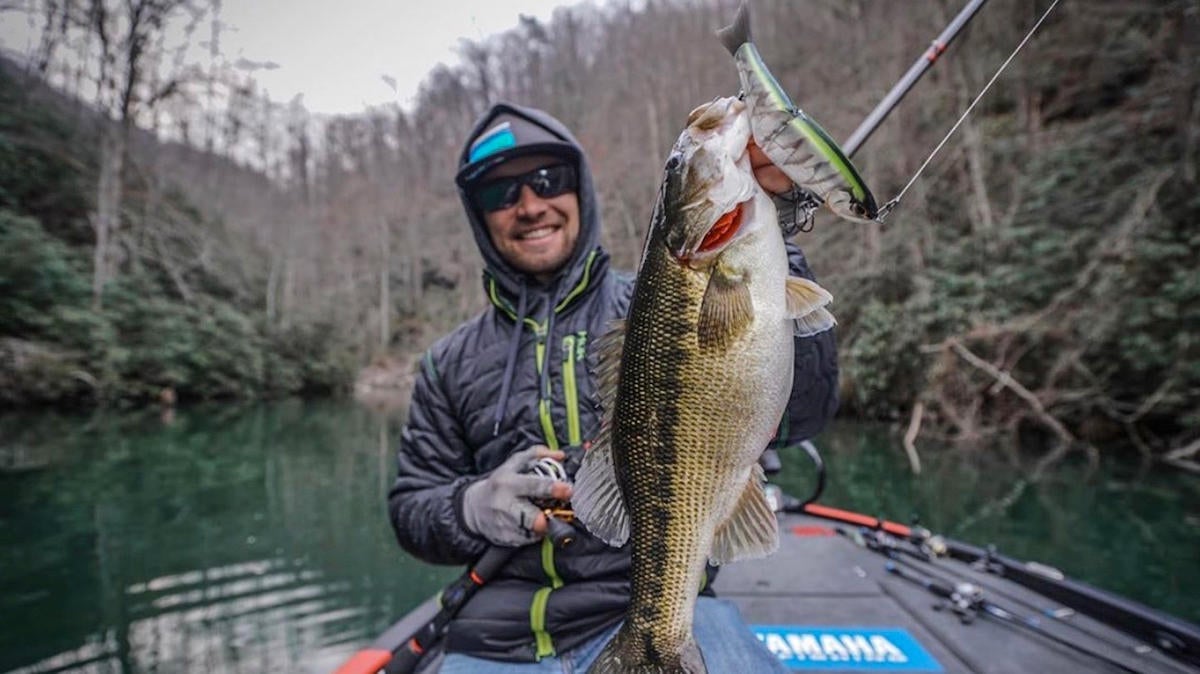
Palaniuk’s first big bait is in the books, so what’s next?
“I’ve already caught fish on the Arashi Glide Bait in events,” Palaniuk said. “Fish that have helped me, too. But if I could just go do that exclusively in a tournament, that’s the dream. I’ve wanted to win a tournament on a big bait for a long time. But I’ve never been able to get on a bite where I could do just that. So winning one on my glide bait would be the coolest thing.
“I also want to be able to expand that category. We have another big bait in the works. That’s all I can say. But I’d also like to take this bait and build a 9-inch version of it. But some of those things are out of my control and it really depends on how this bait does in the marketplace. Big swimbaits are something that’s out of Rapala’s wheel house, so they took a pretty big chance letting me do this. It’s not something they normally do. It’s a really high price point bait for them ($37.99) even though its not a high price point bait in the swimbait world.”
So Palaniuk’s wheels will continue to turn. Swimbaits, even if they live only in the mind’s eye, will keep him fired up and digging on the occasional tough derby day where he has to break out a Ned rig and grind. Because he knows at some point, the conditions will line up, and he can big-bait them for a while. Perhaps the conditions will align all the way to the stars and he can achieve that ultimate goal, winning one on his new creation.
But it won’t be over then, because he didn’t win on a 9-incher. Perhaps after that, can you imagine winning a $100,000 on a 12-inch swimbait? Palaniuk can. And so goes the mental merry-go-round, keeping all those who dare fall for the big bait young at heart and full of fire.


